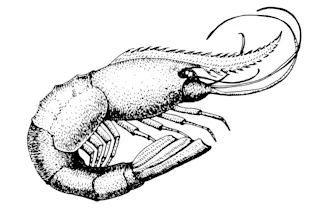Some species are so rare, so secluded or timid that they flit through our consciousness like a ghost. Perhaps they're known from no more than a single specimen, others, undoubtedly, exist only in the hazy halls of rumor. The diversity of life is too great for us, a single species, to pin every bit of biodiversity under the spotlight of science.
Take as an example the ghost shrimp, Ctenocheloides attenboroughi (click through for a picture). The species is known from a single individual, found in shallow water off the coast of Madagascar in a bay surrounded by mangrove trees.
Like other ghost shrimp, females sport a see-through carapace, through which internal structures flare bright red. It's got shorter claws and better-developed corneas than its closest relatives, according to the paper that formally enters it into the scientific record. There's but a single picture online.
Though the observational record is obviously ...














